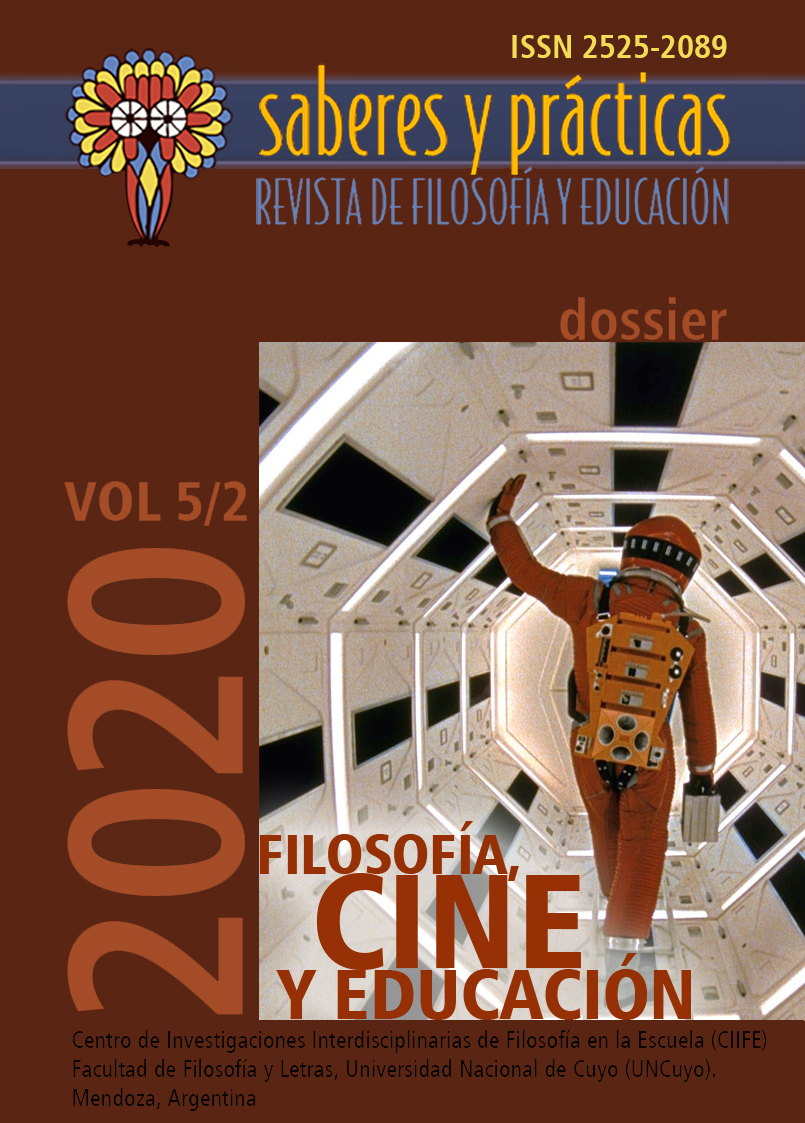Virtuality of the film image and the world as a possibility. Educational-pedagogical performance of cinema from a phenomenological analysis
Keywords:
Cinema, Virtuality, Phenomenology, Education, PossibilityAbstract
Emilio Lledó said that the essence of education is "to show the world as a possibility". To go deeper into this statement from a phenomenological analysis of the virtuality of the film image is what we propose in our work.
A philosophical approach to cinema reveals virtuality, understood phenomenologically and as an ontological feature of the film image, as its capacity to gain a space of neutrality (E. Husserl) in which the image itself is freed from commitments to the factual reality of the world. That is to say, the image of the cinema harbours the capacity to, far from presenting the world to us as it is in fact, to show us the world through the prism of possibility.
These analyses will lead us to a double approach to cinema and its educational-pedagogical performance. On the one hand, we will show how the cinema is capable of bringing us closer to certain truths which, as possibilities of existence (Kundera), appeal to us universally. On the other hand, the filmic image will be shown to de-limit the margins of the world, launching us to think of the "world as a possibility" and, thus, to consider a creative, liberating and hospitable education based on film.
Downloads
References
Aristóteles. (2015). Poética. Alianza editorial.
Boehm, G. (2007). Die Wiedergewinnung der ikonischen Zeit, en: Schweidler, W. (Ed.): Weltbild. Bildwelt. Akademie Verlag.
Bookchin, M. (2019). La próxima revolución. Virus Editorial.
Chomsky, N. (2019). La (des)educación. Austral.
Elkins, J. (2003). Visual Studies. A Skeptical Introduction. Routledge.
Heidegger, M. (1994). "La pregunta por la técnica", en Heidegger, M. (1994). Conferencias y artículos. Ediciones del Serbal. pp. 9-37
Husserl, E. (2013). Ideas relativas a una fenomenología pura y una filosofía fenomenológica. Fondo de cultura económica.
Kundera, M. (2012). El arte de la novela. Tusquets.
Lledó, E. (2018). Sobre la educación. Taurus.
Lukes, S. (1974). Power: A Radical View. Macmillan.
Mendoza Canales, R. (2017). Carta de Edmund Husserl a von Hofmannsthal, 12.01.1907. Areté, 29(2), 427-430.
Mirzoeff, N. (2003). Una introducción a la cultura visual. Paidós.
Moreno, C. (2007). La actitud virtual. Reflexiones sobre la alteridad intencional y el efecto-extrañamiento. En: Filosofía y realidad virtual (C. Moreno, R. Lorenzo Alquézar y Alicia Mª de Mingo, eds.) Prensas Universitarias de Zaragoza e Instituto de Estudios Turolenses
Moreno, C. (2013a). Neutralidad e Infinito. Propedéutica fenomenológica sobre la Imagen y el Acontecimiento. Boletín de Estudios de Filosofía y Cultura Manuel Mindán. Vol: VIII, 41-71.
Moreno, C. (2013b). Verdades irreales. Fenomenología de la ficción y modificación de neutralidad. Philologia Hispalensis 27 (3-4), 51-82.
Rodríguez Magda, R.M. (2011). Transmodernidad: un nuevo paradigma. TRANSMODERNITY: Journal of Peripheral Cultural Production of the Luso-Hispanic World, 1(1), 1-13.
Spivak, G. (2011). ¿Puede hablar el subalterno? Cuaderno de plata.
Trilnick, C. (2 de agosto de 1958). Nuevo Cine Latinoamericano. Recuperado el 15 de septiembre de 2020 de: https://proyectoidis.org/nuevo-cine-latinoamericano/
Published
How to Cite
Issue
Section
License

This work is licensed under a Creative Commons Attribution-NonCommercial-ShareAlike 2.5 Argentina License.









